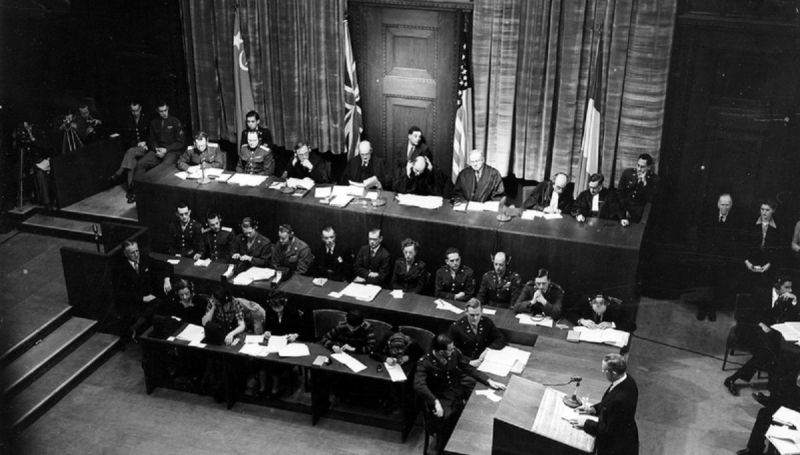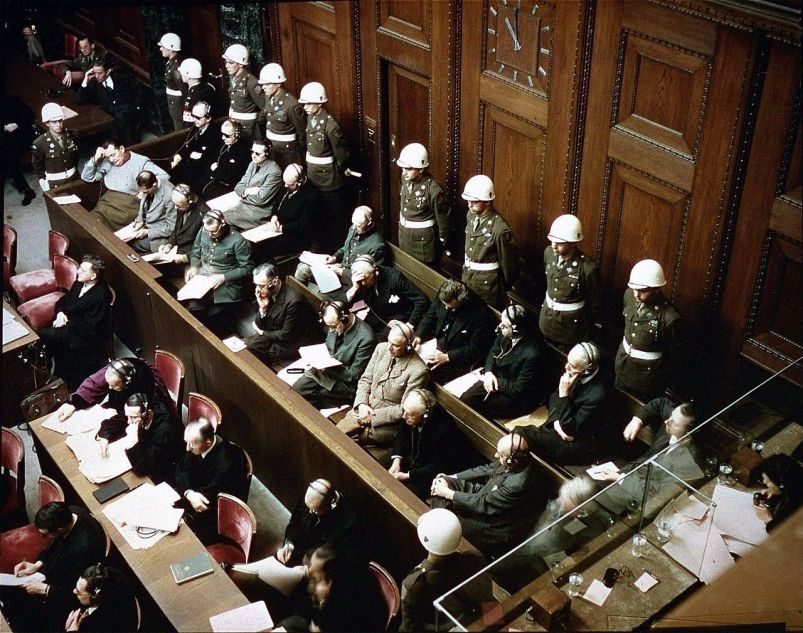On 28 November, witness testimony was presented for the first time at the court session. It was read out, because the witness himself was in the Western hemisphere. The document was an affidavit executed by George S. Messersmith, a former consul general of the United States of America in Berlin, who, due to his high diplomatic post, had witnessed Germany's preparation for aggression. The defence was on its feet: why wouldn't an American diplomat appear in court and be cross-examined? Sergei Miroshnichenko, a lawyer and international law scholar, explained how the International Military Court resolved such disputes.
During the Nuremberg trials, the tribunal developed two approaches to affidavits, written statements confirmed by oath or affirmation for use as evidence in court. The first approach was formulated in the situation with George Messersmith. When US Prosecutor Sydney Alderman began reading out this affidavit, which proved the existence of a conspiracy and links between the German government and the Austrian Nazis, the counsel for defendant Von Papen, Egon Kubuschok, immediately objected. The defence submitted a motion for Messersmith to appear in person in the courtroom. Alderman explained that Messersmith was in Mexico City (from 1942 to 1946, George S. Messersmith served as the US ambassador to Mexico – author) and it was difficult to get him to court. The Tribunal denied the defence’s request and made the following decision. It would accept affidavits, but on one condition: if the defence wished to put interrogatories to the witness, they would be at liberty to do so. Von Papen's defence, and subsequently Funk’s, von Neurath’s, and Doenitz’s, prepared them, and the US prosecution sent them to Mexico City. The answers to the interrogatories were submitted to the Tribunal in April 1946.

The second approach arose out of the US prosecution's attempt to disclose the affidavit of former Austrian Chancellor Kurt Schuschnigg. The defence stated that the testimony of this witness was very important and there was no obstacle to ensure that Schuschnigg would appear in court. The Tribunal granted the defence motion and prohibited the prosecution from reading out the testimony of Schuschnigg. At the same time, it allowed the parties to summon Schuschnigg to court, but they never did.
These two factors - the importance of the testimony and the geographical accessibility of the witness - were not tacit rules. They were officially ruled by the Tribunal. The classic principle of Anglo-Saxon law was applied here, when the procedural rule is formulated during the trials. There was no procedural law, an exhaustive set of provisions regulating court procedure, which could serve as a guideline for the Tribunal. The Charter of the International Military Tribunal provided framework rules for the conduct of the proceedings, and Article 19 explicitly stated that the Tribunal shall not be bound by technical rules of evidence. Therefore, during the trials, the Tribunal would officially rule on every situation that arose. The defence got acquainted with the texts of the decisions in the defendants' information centre.
This practice was extended not only to affidavits, but also to other documents. When the Soviet prosecution tried to add Friedrich Paulus' testimony to the Soviet government of 9 January 1946 as evidence, the defence stated that Paulus' letter was not an affidavit, that is, not an interrogation report. Hence, it could not be included in the case. The second argument was the importance of the figure of the German field marshal: he developed the plan “Operation Barbarossa”, and was directly familiar with all top German officials. The Soviet prosecution was expecting such arguments and took Paulus to Nuremberg in advance, where he was brought before the court as a witness.
Henceforth, the Tribunal strictly adhered to this rule. If the affidavit concerned the Nazi top and bringing the witness to Nuremberg was not difficult, the court unfailingly demanded to examine the witness personally.
Whenever victims of fascism testified, the defence did not miss an opportunity to note that the witness had a personal grudge, which meant that the testimony was biased. Therefore, the prosecutors, when selecting witnesses for examination in the courtroom, gave preference to people who had no personal accounts with the Nazis – a testimony of an impartial person is more valuable. This was why the reading of the affidavit by Hermann Graebe, a German manager and engineer in charge of a construction firm based in Ukraine, made a strong impression. Graebe witnessed the Jewish pogrom in the Rovno ghetto in July 1942 and the mass executions of Jews near Dubno in October of the same year. He described the shooting of Jews in an anti-tank ditch to the court.
There were also some technical limitations on the admission of affidavits and documents. When the same Messersmith’s testimony was read out, its Russian and French copies were not ready. Until around December, the prosecution did not have time to translate documents into all four languages of the trials at all, that is why affidavits, in particular Messersmith’s, were read out in quotes rather than in full. The American side suggested that until documents were translated into all four languages, only what was made public in the courtroom should be considered evidence, and that participants in the trials should be informed by means of the simultaneous interpretation system. Later on, documents translated into the four languages of the trials were used as evidence, even without being disclosed in the court. There was no need to read them out, merely to provide the name and number.
It could not be said that the Tribunal retained an accusatory bias on the admission and evaluation of evidence, including affidavits. The court adjudicated on the issues of the procedure of the trials taking into account the defence opinions, and tried to balance the interests of the participants in the proceedings. In that respect, the Nuremberg Tribunal was strikingly different from the extrajudicial killings established by the Nazis.
A total of 116 witnesses were interviewed in the courtroom throughout the trials.
Of these were:
- 33 prosecution witnesses;
61 defence witnesses;
22 witnesses in an organised crime case.
A total of 143 affidavits from the prosecution, as well as 196,213 written pieces of evidence from the defence in the organised crime case, were submitted to the court.
Source:
The verdict of the International Military Tribunal at Nuremberg
By Vasilina Vartsaba
























